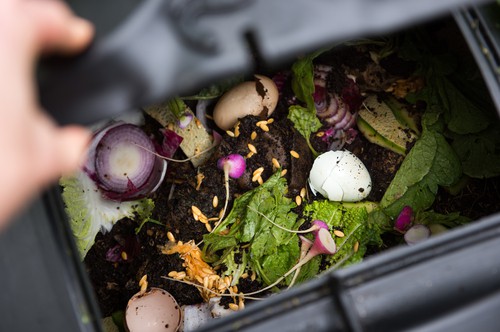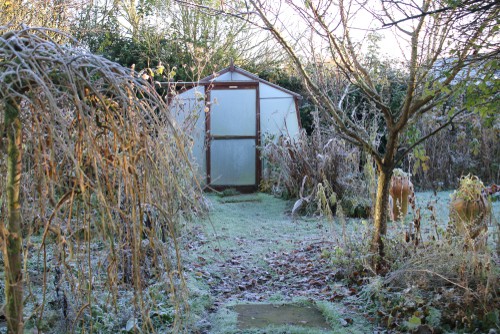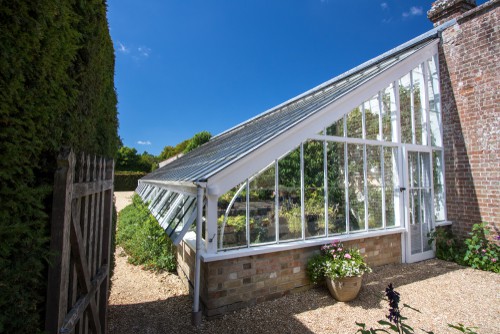Last updated on March 21st, 2022
Our site is reader supported, this means we may earn a small commission from Amazon and other affiliates when you buy through links on our site.
Having your own greenhouse seems like a great idea but you might be worried about the expensive electric bill. It’s already hard enough to keep your house warm but now you have to keep your greenhouse warm too.
Thankfully there are ways that you can design and maintain a greenhouse without using electricity, and at the very least, protect those plant that needs a little extra protection from hard frost without using electricity.
In this guide, we’re going to focus on ways of improving insulation, other natural heat sources to keep the greenhouse a few degrees warmer and hopefully at least frost-free, but we also include some alternative greenhouse heaters to the electric models.
The first step is to capitalise upon the sun. Certainly, there will be times when it’s cloudy out, and in the winter the number of daylight hours is reduced drastically, but you can still design your greenhouse and set it up in such a way that it takes advantage of as much free energy from the sun as possible, and then use this to keep your greenhouse a few degrees warmer during the night.
Insulate your greenhouse to retain the most heat possible
 Buy from Amazon.co.uk by clicking here
Buy from Amazon.co.uk by clicking here
The first thing to consider is to ensure is that your greenhouse is fully insulated with no gaps for draughts to enter. It’s essential that any heat you get is not simply lost because of poor insulation. Tape up all gaps with insulation tape or use transparent mastic to seal and fill in any small cracks. Also, replace any broken panes or seal them with tape.
Next, insulate your greenhouse with bubble wrap, most greenhouses are designed so that you can use specially designed clips, and these are available from most garden centres and DIY stores to fix the bubble wrap to the greenhouse. Once your greenhouse is properly insulated it will make a big difference in how much heat it will retain.
Place a compost bin in your greenhouse to take advantage of the natural heat produced
In addition to using the sun, one way to add warmth inside the greenhouse is to make your compost in there. When you make a compost pile it usually stays incredibly hot as it’s working and rather than digging your pile outside of the greenhouse and letting that heat go to waste, do it inside the greenhouse. Have a path around that pile so that you can access it easily and still turn it when necessary and then sit back and enjoy the natural heat that it puts out, which in turn will help keep the greenhouse a little warmer than outside the greenhouse.

Use thermal mass objects such as bricks or a barrel of water
Thermal mass objects need to be used appropriately. Things like clay, rocks and bricks will absorb heat when the sun is up and everything is warm and then release that heat when the temperatures get colder during the night. You can make a raised bed out of brick walls or stone walls inside of which you grow your plants in order to help with this heat.
Water functions as a good thermal mass as well so keeping containers of water around that are sealed will work in the same way, it will absorb warmth during the day when the greenhouse heats up using the sun and then releases it at night as it gets colder.
Use clear plastic to make a doubled glazed effect over the windows for extra insulation

Double glazed windows are commonly seen in houses in most parts of the UK because they are more energy-efficient. These windows allow the warmth from the sun to come into the house during the daytime but then prevent that same heat from escaping when the temperatures drop. You might not be able to afford double glazed windows for your greenhouse and most of the time they wouldn’t fit anyway, however, you can double up on the layers you have by repurposing clear plastic to help create a double-pane effect.
Position your greenhouse facing north to take advantage of the sun
Position your greenhouse facing north (if you can) to take full advantage of the sun. Paint the inside of the south-facing interior wall with white or cover it with a reflective material. This will help the sun to bounce off the wall and go directly into the greenhouse, giving your plants some more direct warmth during the daytime.
Place a lean-to greenhouse against your wall to transfer heat from your home into your greenhouse
If possible you can invest in a lean to greenhouse and then place it against the wall of your home. By doing this the heat from your home will transfer through the walls into your greenhouse and help keep it a few degrees warmer. The wall will also act as a thermal mass object.

Sink your greenhouse into the ground
If possible, before you build your greenhouse, dig a pit 1-2ft deep into which the greenhouse gets positioned. Underground is significantly warmer than above ground, especially in the winter, so if you dig a pit and build your greenhouse into the ground the temperatures will remain more constant at the base and help keep things moderately warm inside. This is ideal for plants placed at floor level and is often enough to protect them from frost.
Use paraffin or gas greenhouse heaters
Paraffin heaters, perfect for keeping a greenhouse frost-free – Available from Amazon.co.uk
If you want to go without electricity, or if you simply don’t have access to a power source, or any socket, you can compensate by using a gas heater (as pictured below) or a paraffin heater (pictured above) rather than an electric heater.
 Gas greenhouse heaters are perfect for keeping a greenhouse above freezing and moderately warm – Available from Amazon.co.uk
Gas greenhouse heaters are perfect for keeping a greenhouse above freezing and moderately warm – Available from Amazon.co.uk
Gas greenhouse heaters can be used to keep a greenhouse warm enough for tender plants that need a reasonable amount of heat, however, they can be costly to run. If you just need to keep your greenhouse frost-free, you can simply use a paraffin heater when the weather has forecasted near or below freezing to protect more tender plants and keep your greenhouse frost-free.




